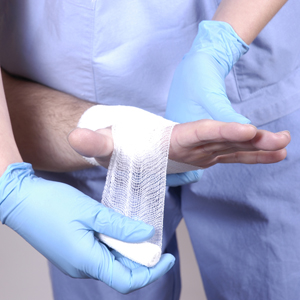 MRSA — methicillin-resistant Staphylococcus aureus — is a strain of bacteria that has become resistant to the antibiotics normally used to treat a staph infection.
MRSA — methicillin-resistant Staphylococcus aureus — is a strain of bacteria that has become resistant to the antibiotics normally used to treat a staph infection.
Believed to be a result of decades of unnecessary antibiotic use (e.g., taking antibiotics for colds, flu, or other viral infections that don’t respond to antibiotic treatment), MRSA cases can range from skin infections to sometimes fatal infections of the blood, bone, joints, lungs and heart valves, according to the National Institutes of Health.
Below are several more facts about MRSA and staph bacteria infections:
- Only 2 percent of the population carries the antibiotic resistant strain known as MRSA, according to the Mayo Clinic.
- One in three people carry staph on the skin or in the nose, but staph bacteria is generally harmless unless it enters the body through a cut or wound. Even then, staph bacteria generally only causes a skin infection in most healthy people.
- MRSA is prevalent in long-term care facilities and can be transmitted during any invasive procedure that provides MRSA a method of entry into the body.
- Community-acquired MRSA infections are common among those living in crowded conditions and among athletes, especially those with close skin-to-skin body contact, such as wrestlers.
The good news is that the rate of hospital-acquired MRSA infections have been declining by around 50 percent in the past 10 years, according to some Centers for Disease Control and Prevention (CDC) studies. This may be attributed at least in part to targeted efforts on the part of healthcare facilities to prevent the spread of MRSA infection.
Whether you work at a hospital, clinic or long-term care facility, preventing the spread of MRSA requires a few simple steps:
- Frequently scrub your hands for at least 15 seconds with soap and hot water, and use a disposable towel to dry your hands throughly. Use another disposable towel to turn off the faucet.
- Use alcohol-based hand sanitizers when soap and water are not available. Apply enough product, rub it in well and let it dry completely. Note: The CDC recommends using a sanitizer that contains at least 60 percent alcohol.
- Cover all open wounds with dry sterile bandages until they have healed completely to prevent the spread of infection.
- Do not share personal items such as razors, towels, sheets and athletic clothing with others, as staph can live on inanimate objects.
- Shower after all athletic activities, using soap to vigorously scrub your skin and reduce bacteria.
- Wash your athletic clothing in hot water after each use, and consider using bleach. Remember to wipe down shared athletic equipment before and after use with alcohol-based wipes.
- Sanitize all of your linens with hot water and/or bleach if you have an open sore.
Follow these tips to protect yourself and your patients from MRSA, and learn more about the bacteria’s symptoms in this CDC article.










